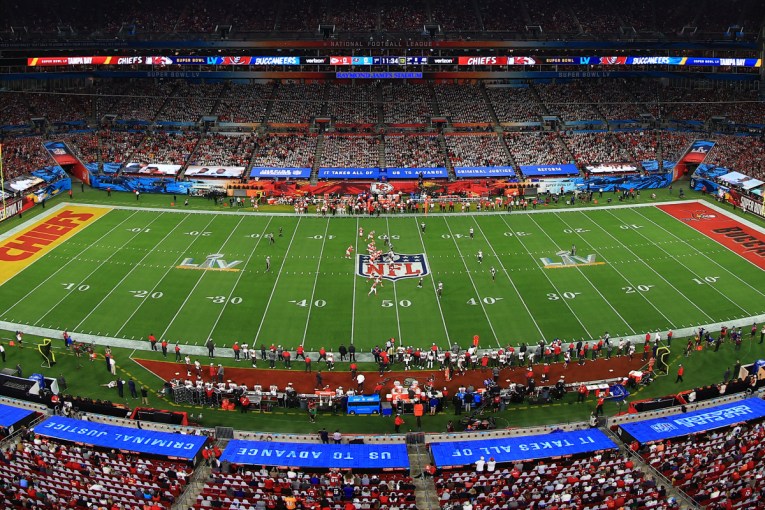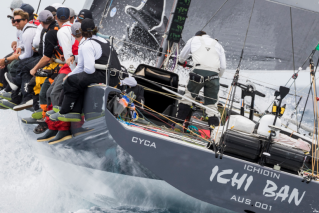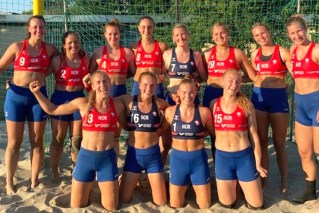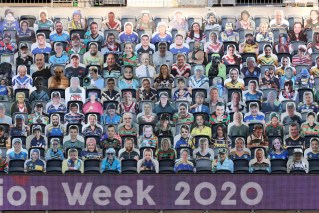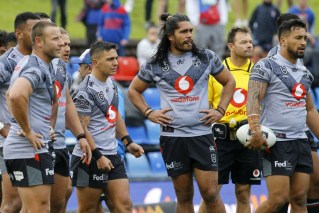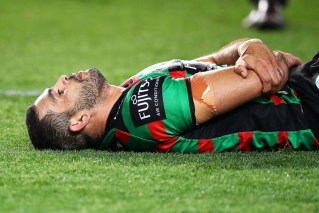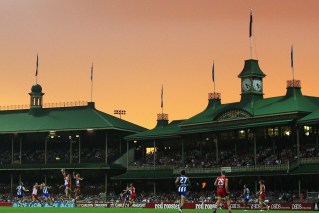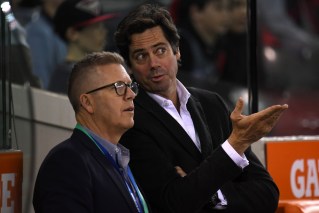Why the Pies don’t deserve to play on Anzac Day
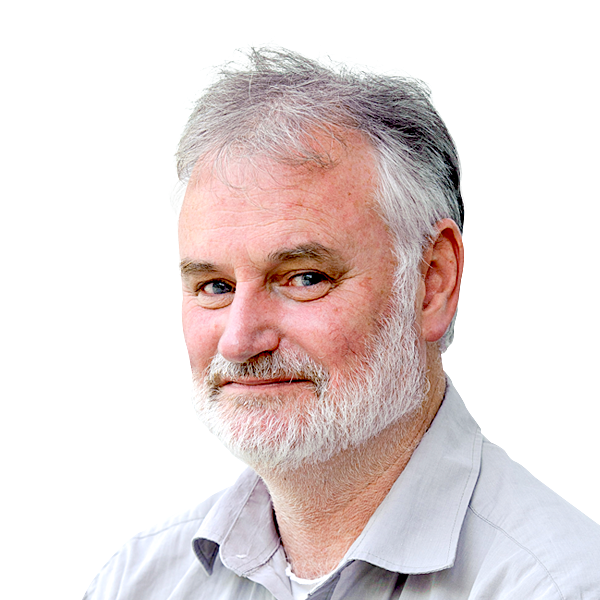
• Patriotic Pies have every right to play on Anzac Day: historian
It’s time to reconsider what for many Melburnians seems the most important part of Anzac Day, the Bombers-Pies clash at the ‘G. After the Dawn Service and the march, for many it’s off to watch the AFL’s biggest game outside Grand Final day.
But are there clubs more representative of the Anzac myth?
The Bombers aren’t the problem. They have strong Great War credentials. With the other so-called upper class clubs – Melbourne, Geelong, St Kilda and, to a lesser extent, South Melbourne – the Bombers withdrew from the competition in 1916, returning two years later.
Most of these clubs had enough of the amateur, public school tradition. Football was muscular, Protestant and a good preparation for the ultimate game – war.
Collingwood was from the other side of the tracks. With the other so-called working class clubs – Richmond, Fitzroy and Carlton – it played on during the war years despite calls from politicians and the press for the competition to disband.
Furthermore, Collingwood seemed reluctant to answer the call. In total only 16 Collingwood players served, the lowest tally by far of the four clubs.
Compared to Melbourne, the Pies did not pull their wartime weight. The Demons stood out of the competition for three years and, aside from the defunct University, had greatest number of war dead, 16 in all.

AM ‘Joe’ Pearce. Photo: Wikipedia
Melbourne’s champion full-back, AM ‘Joe’ Pearce, was one of the first to enlist and among the first to die. A devout Anglican and staunch amateur, Pearce was killed at the first Gallipoli landing. His death heralded the club’s deep connection with war. During the Second World War, the club lost a further 13 players, including premiership winners, the ace fighter pilot ‘Bluey’ Truscott, and the Rat of Tobruk, Ron Barassi Senior.
Compared to Melbourne, the Pies did not pull their wartime weight.
Barassi’s son became the heart-and-soul of the club during the 1950s and early 1960s, forming a legendary alliance with coach Norm Smith. Behind these legendary Melbourne sides lay the tragedies of Barassi senior, Truscott and Joe Pearce.
The club named its best and fairest award after Truscott. The runner-up receives the Syd Anderson Memorial Trophy, named after the triple premiership wingman, killed in combat at Wewak in May 1944, while the third place-getter wins the Barassi Senior award. These ensure war and sacrifice remain integral to the club ethos.
Oddly, this history by-passed the AFL brains-trust when it concocted the instant tradition of the Anzac Day clash in 1995. The idea came from the Essendon coach, Kevin Sheedy. A conscript during the Vietnam War, Sheedy convinced the AFL, Collingwood and the President of the RSL, Bruce Ruxton, a Magpie supporter, that the fixture was a goer.
It fitted in with the hard-to-shake amateur ethos that associated football with war. As Leonie Sandercock and Ian Turner suggested in their 1981 landmark football history, Up Where Cazaly?, “the ideology and rhetoric of football” edited out the inconvenient truths that “by no means all players had enlisted, and the competition had continued during the [Great War] years to provide an afternoon’s popular entertainment”.
Foundation myths are tricky and the Bicentenary could never reconcile the gulf between Indigenous and settler Australians, but war and sport could.
These facts have been forgotten in the post-Vietnam War Anzac revival. Constructed instead has been an Anzac industry built on the back of the new nationalism of the 1970s and 1980s, and the indigenous footy code has played its part.
It was evident in Peter Weir’s 1981 film Gallipoli in the diggers’ slap-up footy game in front of the Pyramids. Arguably the most significant film made in this country, Gallipoli helped resurrect the Anzac legend at a time when Palm Sunday peace rallies attracted greater numbers than Dawn Services and the march.
With the 1988 bicentenary’s flop, Anzac became even more important. Foundation myths are tricky and the bicentenary could never reconcile the gulf between Indigenous and settler Australians, but war and sport could.
Throughout the 1980s, war gradually emerged as the unifying myth and sport was not far behind. As the country’s storytellers, filmmakers and educators reintroduced Australians to Anzac, governments threw money at elite sport to boost national pride.

Bill Gammage’s The Broken Years. Photo: Booktopia
On the digger front, particularly influential was Bill Gammage’s 1974 book, The Broken Years. Rarely out of print, it was prominent on school and university reading lists by the mid-1980s.
By the turn of the century the backpacker boom had hit the war memory market.
But it was Gallipoli which set the stage, supported by films like Breaker Morant and The Lighthorsemen, the 1984 mini-series, The Last Bastion, the re-release of Charles Bean’s Great War histories, and the astonishing success of Albert Facey’s 1981 autobiography, A Fortunate Life.
The pivotal event, however, was the 75th anniversary of the Gallipoli landing in 1990. In the wake of the bicentenary’s flop, Prime Minister Bob Hawke flew ageing Anzac World War I survivors to Gallipoli to mark the occasion. Anzac was back on the political agenda and in 1992 the Vietnam Memorial was unveiled, followed two years later by the interment of the Unknown Soldier.
By the turn of the century the backpacker boom had hit the war memory market, and the Dawn Service at Anzac Cove became a sought-after stop on young Australians’ and Kiwis’ European itineraries. A Gallipoli industry flourished, leading historians Henry Reynolds and Marilyn Lake to claim that Australian history had been hijacked by militarism.
The AFL tapped into this movement and Essendon and Collingwood provided the necessary ‘blockbuster’. Despite the so-called sacredness of the day, militarism and football were and still remain an easy fit.
Matches had been played on Anzac Day since 1960, often drawing large crowds. In 1975 Carlton and Essendon drew 77,700 to VFL Park, while two years later over 92,000 watch Collingwood and Richmond at the MCG.
The clash constitutes a collective amnesia about a contested period in this nation’s history. It’s about the potent melding of militarism and sport, and its hijacking of the history.
But it wasn’t until the mid-nineties that the day became the home-and-away blockbuster on the AFL calendar. Despite a dip in attendances in the mid-noughties Essendon and Collingwood have regularly attracted 80,000-plus crowds.
Despite claims that the match is a fitting representation of the Anzac spirit, it adds up to little more than a money-spinner for both clubs and the AFL. Critics have questioned the morality of using the Anzac myth to market the match and the two clubs’ monopolisation of the day.
But there has been no questioning of whether these clubs are worthy participants. Essendon has strong claims to the day. With Melbourne, Essendon sought the suspension of the 1915 season but was voted down by the other clubs. With Melbourne, St Kilda, Geelong and South Melbourne, the club withdrew from the League in 1916, returning for the start of the 1918 season.
Collingwood’s claims are much more problematical. The club’s enlistment for the Great War was half that of the other three inner Melbourne clubs – Richmond, Fitzroy and Carlton. Not even the enlistment of wealthy club patron, John Wren, at the age of 44 could inspire more players to join.
According to Collingwood president, Jim Sharp, and secretary, Ern Copeland, working men deserved their entertainment. Copeland also recognised Collingwood needed gate receipts to stay afloat during the war years.

Kevin Sheedy and Mick Malthouse were instrumental in developing the Anzac Day blockbuster. Photo: Getty
Though Copeland and treasurer, Bob Rush, committed 10 per cent of club revenue to the Patriotic Fund, Collingwood refused to cut player payments and expenses early in the war. During the 1916 season, the club disguised gifts to players and committeemen as presents to soldiers. But Collingwood was not alone. Carlton chose to pay off debt rather than contribute to the Fund.
While Melbourne named its best-and-fairest trophies after fallen war heroes, Collingwood named theirs after Copeland and Rush.
Collingwood’s attitude is not surprising. The neighbourhood was predominantly Irish Catholic and deeply swayed by Melbourne’s Irish nationalist archbishop and anti-conscription campaigner, Daniel Mannix. During the 1916 and 1917 conscription referenda, Collingwood voted overwhelmingly against conscription.
This is the hidden history of the Anzac Day clash. It has been masked by the bugler, the solemnity of the minute’s silence and the near comical references to footballers displaying mythical Anzac traits. More significantly, it has been masked by an Anzac industry that has narrowed war history to the digger experience.
This clash isn’t about tradition. If so Collingwood would not be there. Melbourne would be.
The clash constitutes a collective amnesia about a contested period in this nation’s history. It’s about the potent melding of militarism and sport, and its hijacking of the history.
It’s not about war, but fuzzy war memory and an Anzac industry that has cashed in on it.
More importantly, it’s about getting a crowd to the ‘G and that’s why the Pies are there.
Dr Tom Heenan teaches sport history at Monash University and barracks for Melbourne
